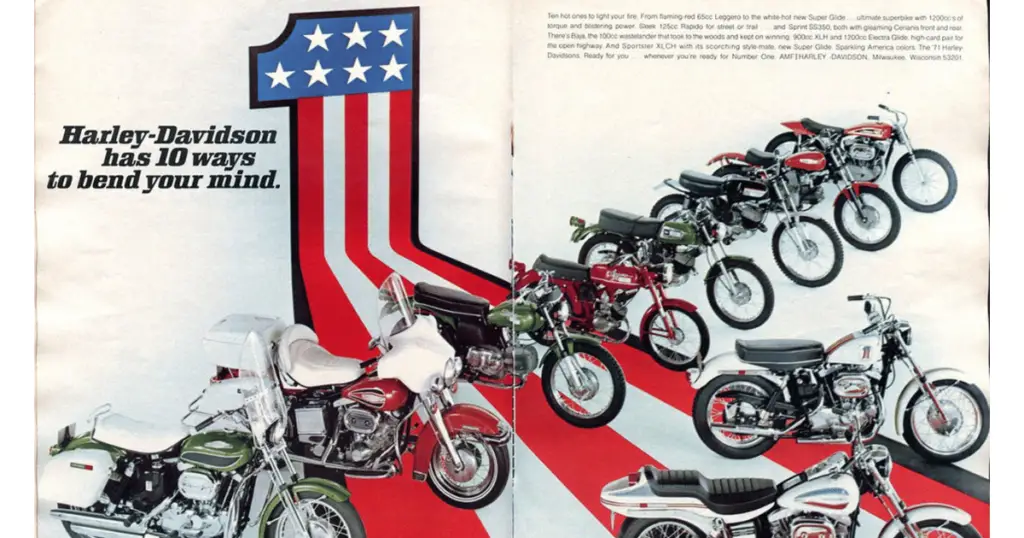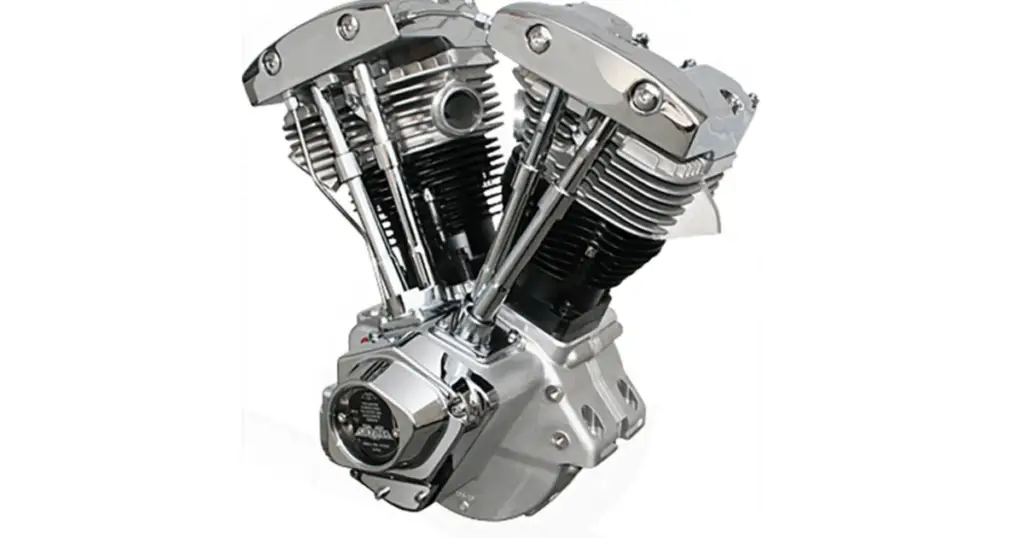This article aims to provide an exhaustive insight into the famed era of the AMF (American Machine and Foundry) Harley-Davidson years. This period, significant in the motorcycle industry’s history, witnessed a major shift in Harley-Davidson’s ownership and the subsequent impact on its product line, particularly the AMF Shovelhead, a marque that has etched its name in the annals of motorcycle lore. So… where do we begin?
What Is The AMF?
The AMF or American Machine and Foundry was initially a manufacturer of recreational sports equipment, notable for producing items such as bowling equipment and tennis rackets. However, the firm made a strategic business shift in 1969 when it acquired the then financially struggling Harley-Davidson.

Brief Overview Of American Machine and Foundry
Before the acquisition of Harley-Davidson, AMF was primarily known for its sporting goods manufacturing. The unexpected turn in its business trajectory in 1969, when it took over Harley-Davidson, was perceived by some as an unconventional move. The company, however, provided a much-needed financial aid to the struggling motorcycle manufacturer, thus enabling the continuation of the iconic Harley-Davidson brand.
When Did AMF Take Over Harley-Davidson?
The year 1969 marked a significant turning point for Harley-Davidson as it was acquired by AMF. This takeover was largely seen as a lifeline thrown to the financially unstable Harley-Davidson, ensuring its survival during a challenging economic period.
Are AMF Harleys Any Good?
The question of whether AMF Harleys are any good is subject to debate and largely depends on personal perspectives. While some motorcycle enthusiasts argue that the AMF era was marred by a dip in the quality of Harley-Davidson motorcycles, others hold the view that AMF played a crucial role in keeping the Harley-Davidson brand alive during an economically difficult period.

Were There Common AMF Harley Problems To Know About?
During the AMF Harley years, several issues were reported concerning the workmanship and reliability of the motorcycles produced. Complaints about the production quality, along with the belief that Harley-Davidson had succumbed to corporate America, led to a perception of reduced standards. Despite these challenges, AMF managed to keep Harley-Davidson as the top-selling heavyweight motorcycle brand.
What Years Were AMF Harleys Made?
AMF owned Harley-Davidson from 1969 to 1981. During these years, AMF oversaw the production of several Harley-Davidson models, including the iconic AMF Shovelhead. This period, often referred to as the AMF Harley years, is considered one of the most intriguing epochs in the history of Harley-Davidson.
Related:
> Shovelhead vs Panhead: A Harley Davidson Engine Showdown
> Shovelhead vs Panhead vs Knucklehead (Trip Through Time)
When Did AMF Sell Harley-Davidson?
In 1981, AMF sold Harley-Davidson to a group of investors, including Willie G. Davidson, a descendant of the company’s co-founder. This marked the end of the AMF Harley years, leading to a significant shift in the company’s operational philosophy and a renewed quest for excellence.
And this is what came next:
– Harley Dyna Years: Understanding the Evolution and Models
– Harley FXR Years: A Comprehensive Guide to the Classics
– Dyna vs FXR: Historic Harley Model Showdown and Comparison
– Harley Model Showdown: FXR vs FXRS vs FXRT
Who Took Over Afterward?
The group of investors who purchased Harley-Davidson from AMF included senior executives from the company itself. Their acquisition marked the resurgence of the Harley-Davidson brand, restoring its independence and reinvigorating its commitment to quality.
How Did Harley-Davidson Change After The AMF Years?
After the AMF years, Harley-Davidson underwent significant changes. In 1981, a group of investors led by Vaughn Beals and Willie G. Davidson bought the company back from AMF, leading to a renewed focus on quality and brand heritage. This change marked the beginning of a turnaround for Harley-Davidson, eventually restoring its reputation and market position.
How Do These AMF Harley Years Stack Up Over Time?
The AMF Harley years have left an indelible mark on the history of Harley-Davidson. Despite the challenges and criticisms, this era played a crucial role in shaping the company’s future. The period saw the introduction of several iconic models, such as the amf shovelhead, which continues to be cherished by motorcycle enthusiasts worldwide. Today, parts and accessories from the AMF era remain highly sought after by collectors and Harley-Davidson enthusiasts alike.
What Is The Legacy of The AMF Era for Harley-Davidson?
The legacy of the AMF era is complex. While it is often criticized for the decline in manufacturing quality, it is also acknowledged for keeping Harley-Davidson afloat during a difficult period. The era is a significant chapter in Harley-Davidson’s history, leading to valuable lessons and paving the way for its future success.
Wrapping Up
In conclusion, the AMF Harley years, while often viewed with mixed feelings, undoubtedly played a significant role in shaping the Harley-Davidson brand we know today. The legacy of this era, symbolized by the AMF Shovelhead, continues to resonate within the motorcycling community, reminding us of a pivotal period in Harley-Davidson’s illustrious history.